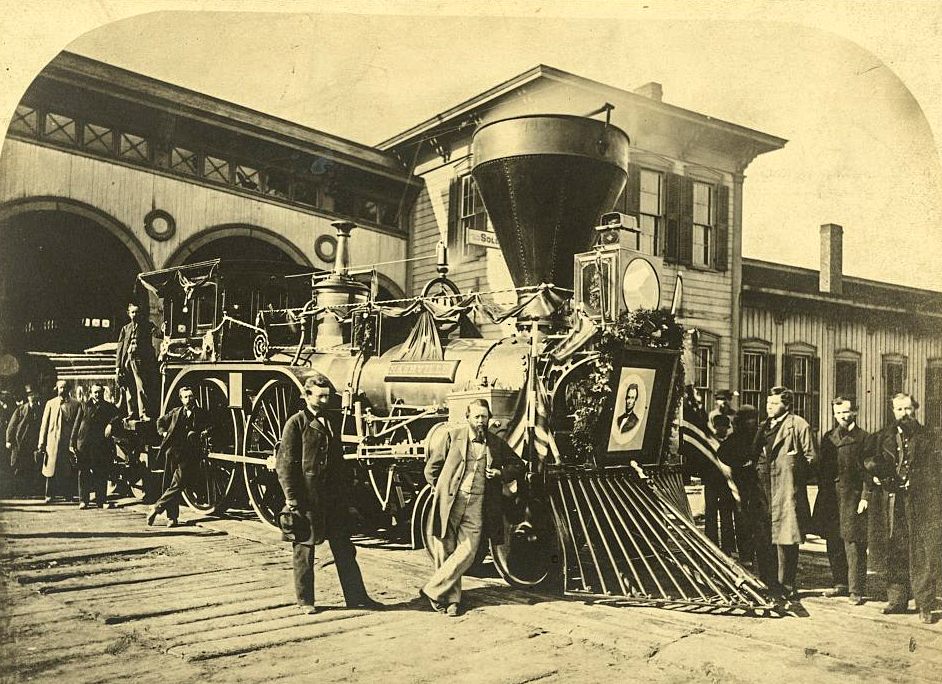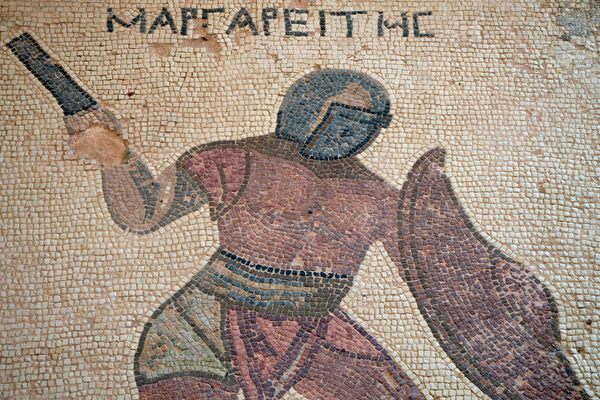George H.W. Bush’s Funeral Train Revives a Lost Tradition
For presidents past, special rail cars provided a final journey home.

When the body of President George H.W. Bush arrives in Texas this week, a 150-year tradition will be briefly revived: the funeral train.
Bush, who passed away on November 30 at the age of 94, will be taken on a special passenger train from Houston to College Station, Texas on Thursday, where he will be buried alongside his wife Barbara. The event will represent the first time a president’s body has been moved aboard a funeral train since the death of Dwight D. Eisenhower in 1969.
The first presidential funeral train ran in 1865 when Abraham Lincoln’s body was taken on a 1,654-mile journey through seven states from Washington D.C. to Springfield, Illinois. The trip, which lasted two weeks, closely followed the route Lincoln had taken to Washington D.C. five years earlier, at the beginning of his presidency.

Lincoln’s casket was loaded onto a private rail car built specifically for the president to travel the country—the 1860s version of Air Force One. Since it was completed only two months before he died, he was never able to use it. Alongside Lincoln’s casket was the casket of his 11-year-old son Willie, who had died of typhoid fever three years earlier. (Willie’s casket had been temporarily placed in a vault at Oak Hill Cemetery in D.C.) The funeral train was led by a steam locomotive shrouded in black drapes with a massive painting of Lincoln above the cowcatcher, a metal frame on the front of the train used to push livestock off the right-of-way.

Thousands of people came to see the train depart Washington D.C. on April 21, 1865, just a week after Lincoln had been taken down by an assassin’s bullet. At every major city, the train would stop and Lincoln’s casket would be taken off for a public memorial. In Philadelphia alone, an estimated 300,000 people came to pay their respects to the 16th president. But the trip was not without its hiccups. When it arrived in Michigan City, Indiana, Major General Joseph Hooker, the man tasked with organizing Lincoln’s funeral, briefly got off the train to get some breakfast. But Hooker took too long eating and the train left town without him. Hooker tracked down a railroader who found a locomotive and chased the funeral train so that the general could get back on.
In April 1945, Franklin D. Roosevelt’s body was taken from Warm Springs, Georgia, where the president had been prior to his death, back to Washington D.C. for his state funeral. Afterwards, Roosevelt’s body was moved by rail to Hyde Park, New York for his burial. Joining the former president were numerous government officials, including the new president, Harry S. Truman, and all nine Supreme Court Justices. Because World War II was still raging, railroaders had to inspect hundreds of miles of track to ensure that no one had sabotaged the route. In New York City, when the train switched locomotives, hundreds of armed soldiers and policemen stood guard along the tracks.

Other statesman have also taken trains to their final resting place. In June 1968, the body of Robert F. Kennedy—who had been assassinated while campaigning for president — was moved from New York City to Washington D.C. Along the way, more than 1 million people lined the tracks to pay their respects. So many people stood along the tracks that the 226-mile journey took twice as long as normal, because the train had to slow down at every station to safely pass. The locomotive engineer later told the New York Times that thousands of people had put pennies on the track ahead of the funeral train so that they could have a souvenir of the event; so many that he could actually feel the coins crunch underneath the train.
On the afternoon of December 6, Bush’s funeral train will travel approximately 70 miles to College Station, home of the George H.W. Bush Presidential Library and Museum. The train will be led by a special locomotive numbered 4141 that was painted by the Union Pacific Railroad to look like Air Force One in honor of the 41st president. The locomotive was unveiled in 2005 during a ceremony at the Bush library and has been in storage the last few years awaiting its solemn duty.

Scott Moore, senior vice president of corporate affairs for Union Pacific, said the railroad is honored to play a part in this week’s remembrance of Bush and to give people a chance to bid the former president farewell.
“[The funeral train] is an opportunity for a large swath of the population to pay their final respects to someone who has done so much for our country,” he said.









Follow us on Twitter to get the latest on the world's hidden wonders.
Like us on Facebook to get the latest on the world's hidden wonders.
Follow us on Twitter Like us on Facebook